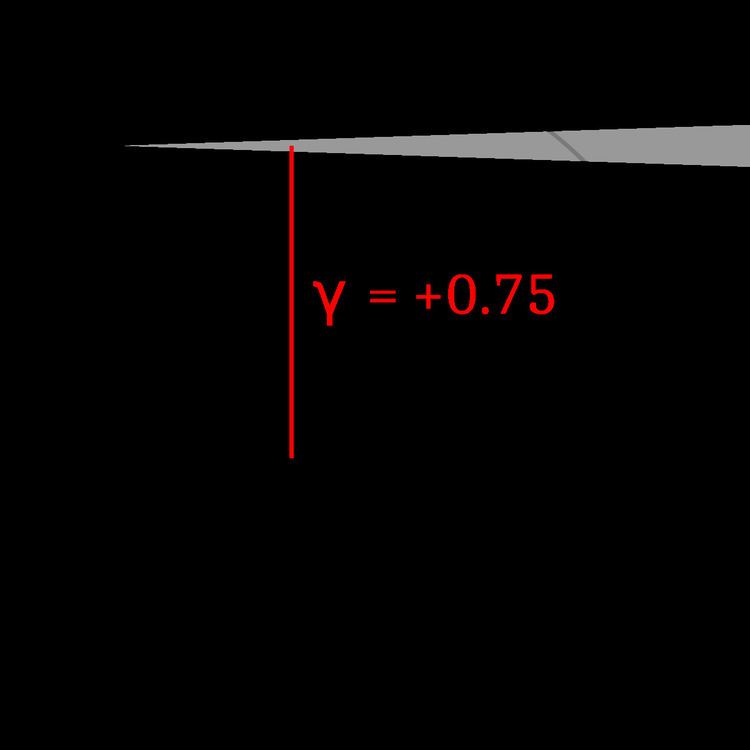 | ||
Gamma (denoted as γ) of an eclipse describes how centrally the shadow of the Moon or Earth strikes the other. The distance, when the axis of the shadow cone passes closest to Earth or Moon's center, is stated as a fraction of the equatorial radius of the Earth. The sign of gamma defines, for a solar eclipse, if the axis of the shadow passes north or south of the center of the Earth; a positive value means north. For a lunar eclipse it defines whether the axis of the Earth's shadow passes north or south of the Moon; a positive value means south. For solar eclipses the Earth is defined as that half which is exposed to the Sun (this changes with the seasons and is not related directly to the Earth's poles or equator, thus the Earth's center is wherever the Sun is directly overhead).
The adjoining diagram illustrates solar eclipse gamma: The red line shows the least distance from the center of the Earth, in this case approximately 75% of radius of the Earth. Because the umbra passes north of the Earth's center, gamma in this example is +0.75.
The absolute value of gamma allows us to distinguish different kinds of solar eclipses:
If the Earth were a sphere, the limit for a central eclipse would be 1.0, but because of the oblateness of the Earth it is 0.9972.
The Solar eclipse of April 29, 2014 with gamma of 1.0001 constitutes the special case of an annular but not central eclipse. The axis of the shadow cone barely misses Earth's south. Thus no central line can be specified for the zone of annular visibility.
